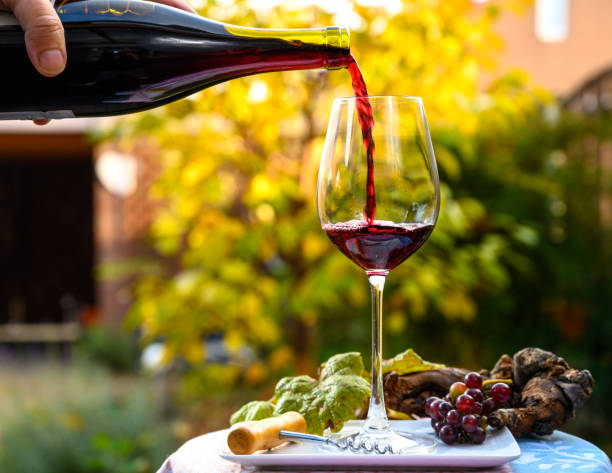Go beyond Beaujolais Nouveau.
The Gamay grape is a chillable red wine familiar to all. If you like pinot noir or Zweigelt, this one is for you or any other light-bodied red wine. The backbone of some of the best red wines on earth is Gamay. While long associated with Beaujolais and Gamay, it is now gaining ground in a few other regions. However, it is important to know which producers to choose from, both in France and abroad.
What is Gamay?
Gamay, a purple-skinned grape varietal, is mostly grown in France, the United States and Australia. This grape is well-known for its tart, fruit-forward flavor and high acidity.
Where does Gamay come from?
Gamay is thought to have originated from the French village of Gamay just south of Beaune, Burgundy. This grape was first cultivated in the 14th Century and was preferred by local growers. It ripens earlier than pinot noir and is easier to cultivate.
Antoine Sunier Regnie
Antoine Sunier is no stranger in the art of great winemaking. After six years of working with Julien Sunier, his brother in winemaking, Antoine started his venture and established his eponymous vineyard in 2014. He also learned a lot from Jean-Claude Lapalu below. Today, Antoine farms 5.5 hectares organically. All cellar work is done by hand. Reggie’s easy-drinking wine has cherry skin and red berries with a hint of sweet spice.
Brick House Gamay Noir
Brick House released their Oregon Gamay for the first time in 1995. Today, the fruit comes from the same Ribbon Ridge Vineyard as it did 25 years ago. Before fermenting the juice in open-top tanks, the estate removes the grapes from the vines and transfers them into neutral barrels for twelve months. The wine’s palate is bright and fresh with flavors of black cherries, dark berries and a hint of smoke. Brick House vines have been certified organic since 1992. Biodynamics was introduced in 2005.
Domaine Jean-Claude Lapalu Beaujolais Villages Vieilles Vignes
This entry-level wine from Beaujolais is one of the best quality-to-price-ratio bottles coming out of the region. This wine, made by Jean-Claude Lapalu (third-generation winemaker), is full of flavor and is made from organic and biodynamically grown fruit and native yeasts. It is vinified with a hands-off approach. Beaujolais Villages Vieilles Vignes has ripe red fruit, violet petals and cracked pepper flavors. The wine is bottled at the full moon after 12 months in French oak.
Division Villages “Les Petits Fers” Gamay Noir
Inspired by Beaujolais’ great wines and their love of France, Kate Norris & Thomas Monroe created this varietal Gamay at well-situated locations in Oregon’s Eola Amity Hills AVA. This wine is made from carbonic maceration of fruit and aged in cement, French oak and stainless steel. The palate is characterized by high-toned flavors such as strawberries, cranberries and white pepper. It also has a refreshing acid-laden end.
Pax Sonoma Coast Gamay
Pax Wines was the original estate to release a varietal Gamay Noir from Sonoma Coast. Today, the bottle is a reference for other producers in the area. The wine was made from whole-cluster and partially sardonically macerated grapes after being grafted from an older block chardonnay to become Gamay in 2014. The wine has floral-tinged, textured flavors with pomegranate and raspberries.
Pierre Cotton Cote de Brouilly
Crafted at the hands of a motorcycle-mechanic-turned-vigneron and his partner Marine Bonnet, this wildly delicious Gamay from the Cote de Brouilly is an essential pick for lovers of the grape everywhere. Cotton organically farms six hectares in the region, having purchased his first hectare of vineyards in 2014. His wines, including this Cote de Brouilly wine, are semi-sardonically aged in cement tanks for up to nine months and then aged in old foudres for another eight to nine. This wine is full of vibrant flavors such as raspberry jam, cherry coke, and herbal tea.

